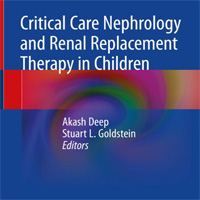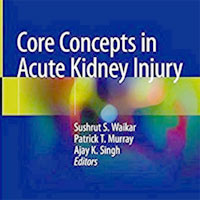Tag: diagnosis
Association Between Comorbid COPD and Prognosis of Patients Admitted to ICU for Non-COPD Reasons
Comorbid COPD increased the risk of 28-day mortality among patients admitted to the ICU for non-COPD reasons, especially for those admitted to the cardiac surgery recovery unit. A retrospective cohort study was performed... read more
Risk Factors for Traumatic Intracranial Hemorrhage in Mild TBI Patients
The findings from this study provide additional context to risk factors currently in use as components in guidelines for the management of mild traumatic brain injury (mTBI) in the ED setting, contrasting high risk predictors... read more
Improving Patient Outcomes: Sepsis Protocols and Rapid Host Response Technologies
Patients come into the emergency department (ED) with symptoms, not diagnoses. That’s when time is of the essence. Clinicians must quickly triage patients and establish an appropriate care pathway to obtain the best possible... read more
Army Scientists’ Technique for Early Sepsis Detection in Burn Patients Submitted to FDA
A new invention developed at the U.S. Army Medical Research and Development Command uses an artificial intelligence machine learning algorithm to identify whether burn patients are at risk of experiencing life-threatening... read more
Critical Care Nephrology and Renal Replacement Therapy in Children
Pediatric critical care nephrology is a complex and highly specialized field, presenting challenges and management strategies that are often quite distinct from those seen in adult practice. Therefore, it is high time... read more

Core Concepts in Acute Kidney Injury
This comprehensive guide covers the causes, characteristics, and presentations of acute kidney injury (AKI), as well as prevention and treatment. The first part of the book features chapters on the epidemiology and diagnosis... read more

Can Clinicians Identify CAP on Ultralow-dose CT?
This study found that clinicians could assess chest ULD-CTs for community-acquired pneumonia (CAP) with high, but not perfect, diagnostic accuracy using an ED radiologist’s assessments as reference standard. Interrater... read more
Hospitalizations for Multisystem Inflammatory Syndrome in Children (MIS-C) in US
Multisystem inflammatory syndrome in children (MIS-C) is a rare, serious condition characterized by fever and multiorgan involvement that occurs after SARS-CoV-2 infection. US Centers for Disease Control and Prevention... read more
Fluid Accumulation Syndrome in Sepsis and Septic Shock
In this review, we aimed to comprehensively summarize current literature on pathophysiology, relevance, diagnosis and treatment of fluid accumulation in patients with sepsis/septic shock. Fluid accumulation syndrome (FAS)... read more
The Hidden Value of MRI: Modifying Treatment Decisions in C-spine Injuries
This study provides a critical evaluation of the implications of additional magnetic resonance imaging (MRI) use in the diagnosis of c-spine injuries. We have demonstrated that an adjunctive MRI extends patients' ED stays,... read more
Genetic Testing in Early-onset Atrial Fibrillation
Atrial fibrillation (AF) is a globally prevalent cardiac arrhythmia with significant genetic underpinnings, as highlighted by recent large-scale genetic studies. A prominent clinical and genetic overlap exists between... read more
Prevalence and Survival of Prolonged VV ECMO for ARDS
The understanding of prolonged venovenous extracorporeal membrane oxygenation (VV ECMO) in the setting of acute respiratory distress syndrome (ARDS) is evolving and durations of support once considered extreme are now commonplace.... read more
The Existence of Adrenal Insufficiency in COVID-19 Patients with Pneumonia
Patients with a history of COVID-19 pneumonia who present with clinical symptoms such as shock, nausea, vomiting, and fatigue should have hypocortisolism included in the differential diagnosis. These patients should also... read more
Lung Ultrasound for Diagnosis and Management of ARDS
Lung ultrasonography (LUS) is essential for diagnosing and managing adult respiratory distress syndrome (ARDS) due to its bedside accessibility and availability across different resource settings. It aids in diagnosis and... read more
Diagnosing Sepsis: Where We’re At And Where We’re Going
Diagnosing sepsis remains problematic. Pathogen identification is frequently lacking and the dysregulated host response is non-specific. Blood cultures often take days to deliver a result and, even then, approximately 90%... read more
Traumatic Major Hemorrhage in a Tertiary Trauma Center
Major traumatic hemorrhage is potentially preventable with rapid hemorrhage control and improved resuscitation techniques. The time from injury to hospital, resuscitation, diagnosis, and definitive bleeding control should... read more
Ineffective Airway Clearance Nursing Diagnosis & Care Plans
Ineffective airway clearance is the inability to clear secretions or obstructions from the respiratory tract. This can be detrimental to breathing and create complications. Secretions can be problematic as a result of... read more
Oxygenation Improvement in Hyperinflammatory Ovine ARDS Treated with Methylprednisolone
Early and persistent improvement in oxygenation was seen only in hyperinflammatory ovine ARDS treated with methylprednisolone, while hemodynamic situation and survival was improved in both injury models and corticosteroid... read more
A Global Perspective on AKI After Major Surgery
Acute kidney injury (AKI) is an abrupt decline in kidney function occurring within hours or days. In patients having surgery, postoperative AKI is a major complication associated with adverse outcomes including mortality.... read more
COVID-19 Severity and 2-year Prevalence of Physical Symptoms
Although the persistence of physical symptoms after SARS-CoV-2 infection is a major public health concern, evidence from large observational studies beyond one year post diagnosis remain scarce. We aimed to assess the prevalence... read more
Simple Blood Test Indicating Sepsis Relapse
Sepsis is often not adequately diagnosed at the early stage when it could still be potentially avoidable. In this report, we describe the dramatic hematological changes found in the blood of a sepsis survivor just after discharge... read more
What to Know About Merkel Cell Carcinoma, the Rare Cancer that Killed Jimmy Buffett
"Margaritaville" singer Jimmy Buffett died of Merkel cell carcinoma, a rare but aggressive form of skin cancer, according to a tribute posted on his official websiteopens in a new tab or window. The 76-year-old music icon... read more









